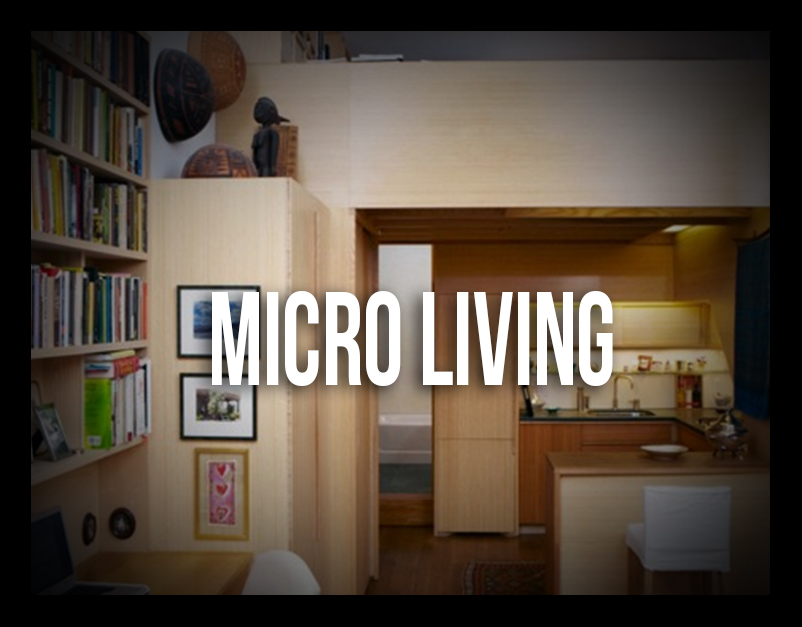The future of Californian housing is a current hot button issue. Since the 1990s, LA County population has sky rocketed from 8.9 million to roughly 10 million residents. One of the options is micro, also called tiny, living. This “tiny house”, or, even a “tiny apartment” style of housing is becoming a more and more attractive option. This type of housing would be more effective and efficient; there would not be a single spare inch to waste! Santa Monica has proved this type of low-cost, low-maintenance, and efficient housing could work.
The idea behind a tiny house is not radically different from what constitutes a “normal” house. The hard part isn’t restricting and re-allocating space, its changing ideologies and how people think about space. Instead of having a rooms and spaces for different activities (eating, dining, sleeping, etc) the tiny house concept revolves around multi-tasking spaces.
A common misconception is that going micro means only dealing with the bare necessities. However, this is just simply not true. The design team at GE Appliances has become increasingly invested in the idea of micro homes & livings. They even have several luxurious mock-ups of what a GE Micro Kitchen would look like. The designs are sleek, efficient, and modern. Micro living does not necessitate only living with the bare necessities. In fact, the smaller dimensions of the home require almost everything to be tailor-made: meaning that you can custom fit every single thing that would benefit you the most. The idea of the intense customizable aspects of the micro home is one of its best qualities. For example, you might not be able to afford the 8-foot slab of marble for your kitchen island, and all the counters, and windowsills…and more! However, you can easily afford the 2-3 feet needed to create a luxurious feel in your micro home.
Additionally, micro living comes with a bevy of benefits besides the enticing ability to customize every single aspect of the home! There is a lot less clutter because there is a lot less space for clutter. You don’t fill up a micro house with “stuff”. Instead, you only display what matters to you, you won’t just go out to buy frivolous items because your space felt “empty” or like it “needed something”. Adding onto the benefits, you will spend a lot less time cleaning 500 feet compared to 1,500 feet. Cleaning two or three small rooms, even a deep cleaning, would only take an hour at most. Living in a tiny home also means you save a lot of money on heating, cooling (which is a huge benefit in LA), property taxes, and home maintenance. This leaves you with a larger chunk of disposable income to spend on eating out, going to events, going on vacations, saving for the future, and generally enriching your life. Micro living also leaves a much smaller carbon footprint. Micro homes are green homes. They use less energy, produce less waste, and, in general, consume fewer resources compared to larger homes. Not only does micro living extend your free time and pad your wallet, but it also helps the environment!
Often referred to as “elegantly disheveled”, ahead of the curve and a curator of eclectic, innovative images, Los Feliz would be the perfect place to begin the “micro house” revolution California is waiting for.
























